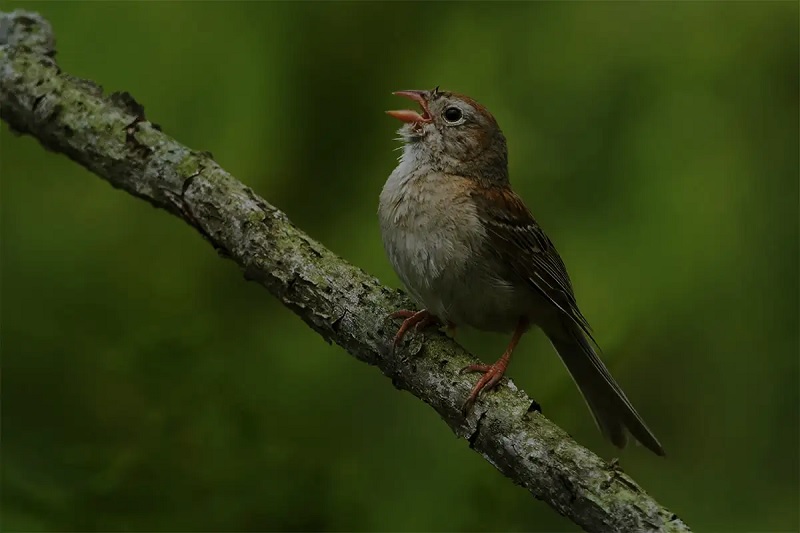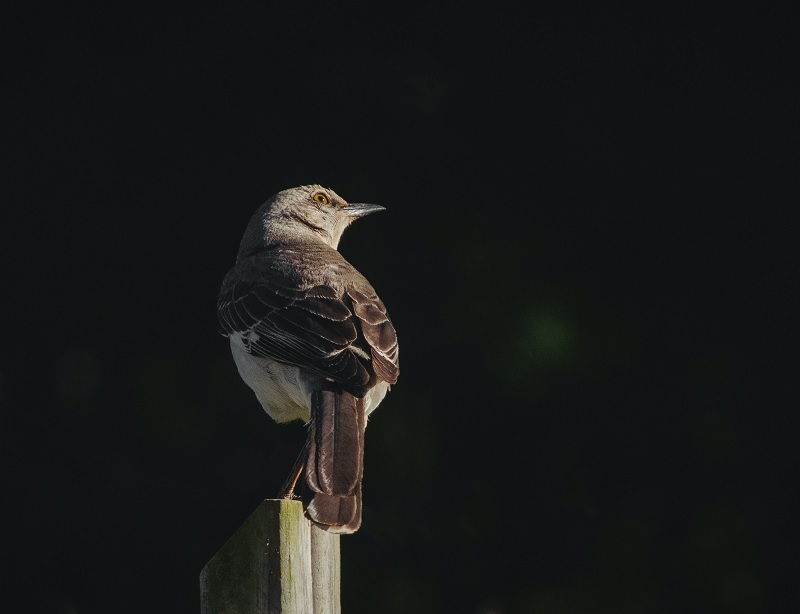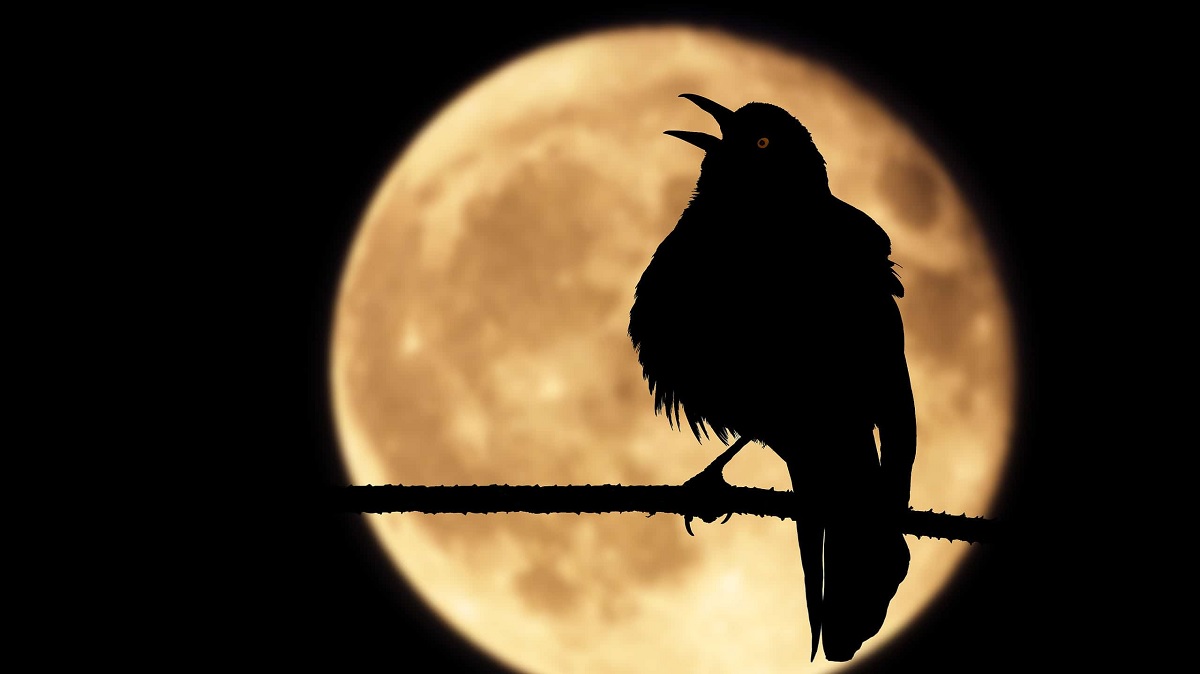Birds are often associated with the cheerful sounds of morning, but many species can also sing at night, which can be both intriguing and puzzling. People frequently wonder what does it mean when birds sing at night, as it deviates from the usual daylight activity patterns. Nighttime singing can serve several purposes, from attracting mates and defending territory to responding to environmental cues like artificial light or changes in weather. Some species, like nightingales and mockingbirds, are naturally nocturnal singers, using the quiet of night to communicate more effectively.
Others may be influenced by human-made lights or seasonal changes, prompting them to extend their vocal activity. Understanding what it means when birds sing at night provides insight into their behaviors, communication strategies, and adaptations, revealing the complexity of avian life and the many ways birds interact with their environment beyond daylight hours.
Biological Reasons
Birds singing at night can often be explained by biological and physiological factors. These behaviors are linked to mating, territorial defense, and natural circadian rhythms. Understanding the biological reasons behind nocturnal singing offers insight into avian behavior, communication, and adaptation to environmental conditions.

Mating and Reproductive Signals
One of the primary biological reasons birds sing at night is to attract mates. Many species use nighttime singing to announce their presence and fitness to potential partners, especially during the breeding season. The quiet of night amplifies their songs, making it easier to be heard over long distances. Male birds often produce complex and repeated vocalizations to demonstrate strength, vitality, and territory ownership. By singing at night, they increase their chances of attracting a mate while avoiding daytime competition. This behavior ensures reproductive success and plays a key role in the continuation of the species.
Territorial Defense
Birds also sing at night to defend their territory from intruders. Nocturnal singing allows them to establish dominance and communicate occupancy to other birds without direct confrontation. Territorial calls serve as warnings to rivals, reducing the likelihood of physical disputes and conserving energy. Nighttime vocalizations can be especially effective for species that share overlapping habitats, as the quiet environment makes their presence more noticeable. This behavior reflects an evolutionary strategy to protect vital resources like food, nesting sites, and breeding grounds. Understanding territorial defense as a biological reason highlights how singing at night is critical for survival and social organization.
Circadian Rhythms and Environmental Triggers
Birds have internal biological clocks, known as circadian rhythms, which regulate their daily activities, including singing. Some species are naturally more active at night due to evolutionary adaptations, allowing them to exploit quieter periods for communication. Environmental factors, such as artificial lighting, moonlight, or seasonal changes, can also influence nocturnal singing. These triggers can extend activity hours beyond daylight, prompting birds to vocalize at night. Circadian rhythms and environmental cues interact to shape nocturnal singing patterns, demonstrating the biological and adaptive mechanisms that govern when and why birds use their voices during nighttime hours.
Environmental Factors
Birds singing at night can also be influenced by environmental conditions. Changes in light, weather, and human activity can affect their behavior and trigger nocturnal vocalizations. Understanding the environmental factors behind nighttime singing reveals how birds adapt to their surroundings and respond to external cues for communication, mating, and survival.

Artificial Lighting
Artificial lighting in urban areas is a major environmental factor affecting birds’ nighttime singing. Streetlights, porch lights, and other man-made illumination can confuse birds’ internal clocks, making them more active during hours that would normally be dark. This extended activity period can prompt them to sing at night, often to attract mates or defend territories. Artificial light can disrupt natural circadian rhythms, influencing hormone production and behavior. Birds in well-lit environments may adjust their vocal patterns to take advantage of quieter nighttime conditions, making their songs more effective and noticeable to other birds in the area.
Weather Conditions
Weather changes, including temperature, humidity, and wind, can influence nocturnal singing. Calm, warm nights provide ideal conditions for sound to travel farther, encouraging birds to vocalize without obstruction. Sudden changes in weather, like approaching storms, may also trigger singing as a warning to other birds or as a territorial display. Seasonal variations, such as spring and early summer, often coincide with increased nocturnal activity due to mating and nesting behaviors. These environmental factors demonstrate how birds respond to external conditions to maximize communication efficiency, ensuring they can maintain territory, attract mates, and coordinate with other members of their species.
Noise and Human Activity
Ambient noise and human disturbances can also affect nighttime singing. Birds may choose to vocalize at night when daytime activity is high, reducing competition and allowing their calls to be heard more clearly. Urban areas with constant daytime noise can push birds to sing during quieter nighttime hours, improving the effectiveness of their songs. Additionally, human presence can alter foraging and perching behavior, indirectly encouraging nocturnal vocalizations. Recognizing the impact of noise and activity highlights how birds adapt to changing environments, demonstrating flexibility in behavior and communication strategies in response to human-influenced ecosystems.
Species Known for Night Singing
Certain bird species are well-known for their nocturnal singing, which often serves purposes like mating, territorial defense, or communication. These species have adapted to take advantage of nighttime conditions, whether in urban areas or natural habitats. Understanding which birds sing at night provides insight into their unique behaviors and ecological adaptations.
Nightingales
Nightingales are perhaps the most famous nocturnal singers, known for their powerful and melodic songs. Primarily active during the night, male nightingales use their vocalizations to attract mates and establish territory. Their singing is most common during the breeding season in spring and early summer, when the quiet of night allows their complex calls to carry farther. Nightingales produce varied notes, often repeating sequences in long, continuous bouts, demonstrating both stamina and vocal skill. Observing nightingales provides insight into how nocturnal singing can enhance reproductive success and territorial control, making them a classic example of birds adapted to nighttime communication.
Mockingbirds
Mockingbirds are another species renowned for their nighttime singing, particularly in urban and suburban areas. These birds are capable of imitating the songs of other birds, insects, and even mechanical sounds, using their vocal abilities to assert territory and attract mates. Nighttime provides a quieter environment, allowing their imitated calls to be more noticeable. Males often sing for hours after sunset, especially during the breeding season, to establish dominance and communicate with nearby females. Mockingbirds demonstrate the flexibility of bird song and how environmental and social factors influence nocturnal vocal behavior.
Thrushes
Several thrush species, including the Hermit Thrush and American Robin, are known for singing at night. Their clear, flute-like melodies serve similar functions to other nocturnal singers, including mate attraction and territory signaling. Thrushes often take advantage of the calm and quiet of nighttime to extend their communication period, especially during the breeding season. Nighttime singing is more common in areas with minimal artificial light and noise, allowing their calls to carry further. Thrushes exemplify how nocturnal singing can enhance reproductive and social interactions, highlighting the adaptability of birds to different environmental conditions.
Other Notable Species
Other birds, such as the European Robin, Eastern Whip-poor-will, and certain warblers, are also known to sing at night. These species take advantage of nighttime conditions to reduce competition, communicate with mates, or maintain territory. Urban lights and quiet nocturnal periods often trigger these birds to vocalize outside typical daylight hours. Studying these species reveals the diversity of nocturnal singing behavior across different bird families, demonstrating how adaptation and environmental cues drive the evolution of nighttime vocalizations. These examples show that night singing is not limited to a single type of bird but is a widespread behavioral strategy.
Symbolic and Cultural Meanings
Birds singing at night have fascinated humans for centuries, often carrying symbolic and cultural meanings. Across different societies, these nocturnal vocalizations are interpreted as messages, omens, or expressions of beauty and mystery. Understanding these meanings offers insight into how humans connect with the natural world and interpret avian behavior in cultural contexts.
Nighttime Birds as Omens
In many cultures, birds that sing at night are considered omens, signaling changes, events, or messages from the spiritual world. For example, nightingales are often seen as symbols of love, longing, and inspiration, while other nocturnal singers may be interpreted as warnings or predictors of weather changes. These beliefs stem from observing unusual or rare behaviors, such as singing after dark, which humans associated with mystical significance. Cultural stories and folklore often highlight these birds’ songs as meaningful, reflecting the connection between natural phenomena and human interpretation of signs.
Birds in Literature and Art
Night-singing birds frequently appear in literature, poetry, and visual art, symbolizing emotion, mystery, or communication beyond ordinary perception. Poets and writers often use the nightingale or other nocturnal singers to represent love, melancholy, or creativity, emphasizing the haunting and beautiful qualities of their songs. In art, depictions of these birds capture the serenity of night or the enchantment of natural soundscapes. By incorporating these birds into cultural expression, humans highlight the emotional and aesthetic impact of nocturnal singing, connecting natural behavior with human imagination and storytelling.
Spiritual and Inspirational Significance
Many cultures interpret birds singing at night as symbols of guidance, inspiration, or spiritual presence. Their songs are believed to encourage reflection, meditation, or connection with the divine. Nighttime vocalizations can evoke feelings of calm, hope, or contemplation, turning natural behavior into a source of cultural and personal meaning. Observing these birds and their nocturnal songs reinforces the idea that nature and wildlife play a significant role in human culture, offering insight, inspiration, and symbolic richness across generations and societies.
Human Impact on Night Singing
Human activity has significantly influenced the nocturnal singing behavior of birds. Urbanization, artificial lighting, and environmental changes can alter when and how birds vocalize at night. Understanding human impact on night singing helps reveal how wildlife adapts to modern environments and the challenges nocturnal singers face.
Artificial Light Pollution
Artificial light from streetlights, buildings, and vehicles disrupts birds’ natural circadian rhythms, often extending their activity into nighttime hours. Birds exposed to urban lighting may start singing earlier or continue later than they would in natural darkness. This can interfere with sleep patterns, feeding schedules, and reproductive cycles. Some species adapt by using these extended hours to establish territory or attract mates, while others experience stress and disorientation. Recognizing the effect of light pollution highlights the unintended consequences of urban environments on natural behaviors, emphasizing the need to balance human development with wildlife conservation.
Noise Pollution
Urban and suburban noise impacts nocturnal singing by causing birds to adjust their vocalization patterns. During the day, high levels of traffic and human activity may mask calls, prompting some birds to sing at night when it is quieter. This shift allows their songs to travel farther and reach potential mates or rivals more effectively. However, chronic noise can cause stress, reduce communication efficiency, and interfere with reproductive success. Studying the influence of noise pollution demonstrates how human activity forces birds to adapt behaviors, sometimes altering their natural rhythms and ecological interactions in unexpected ways.
Habitat Modification
Changes in habitat due to construction, deforestation, or agricultural expansion can influence night singing. Loss of natural cover or increased exposure to predators may prompt birds to sing at unusual times to assert territory or maintain social communication. Fragmented habitats can also concentrate populations in smaller areas, increasing competition and influencing vocal behavior. Understanding how habitat modification impacts nocturnal singing shows the broader ecological consequences of human activity and highlights the importance of conserving natural environments to maintain the balance between birds’ behavioral patterns and their surroundings.
Common Misconceptions
Nighttime singing by birds often leads to misunderstandings about why they vocalize after dark. Many myths persist due to limited observation or assumptions based on daytime behaviors. Clarifying these common misconceptions helps you understand the true reasons behind nocturnal singing and the factors that influence it.
Birds Only Sing During the Day
A common misconception is that birds sing exclusively during daylight hours. While most species are diurnal singers, some birds naturally vocalize at night for mating, territorial defense, or communication. Night-singing species like nightingales, mockingbirds, and thrushes take advantage of the quieter environment to make their songs more effective. Assuming that singing is strictly a daytime activity overlooks the behavioral diversity of birds and the adaptive reasons behind nocturnal vocalizations, which can include environmental factors, biological rhythms, and reproductive strategies.
Night Singing Is Always a Sign of Distress
Some people believe that birds singing at night indicates stress, illness, or confusion. In reality, nighttime singing is often a normal, healthy behavior for many species, particularly during the breeding season. Birds use nocturnal songs to attract mates, defend territory, or communicate without competition from daytime noise. While stress or disturbances can affect singing patterns, assuming that night vocalizations are abnormal ignores the natural and adaptive reasons behind this behavior. Recognizing the normalcy of night singing helps you better understand avian ecology and the purpose of their vocal activity.
Only Specific Species Can Sing at Night
Another misconception is that only rare or exotic species sing at night. In truth, a variety of common birds, including urban-adapted species like mockingbirds and robins, regularly vocalize after dark. Night singing can occur in multiple families of birds, depending on environmental conditions, habitat, and breeding cycles. Limiting night singing to a few species underestimates the behavioral flexibility and adaptability of birds. Understanding that numerous birds engage in nocturnal singing helps you appreciate the complexity of avian communication and the influence of ecological and human-made factors on their behavior.
People Also Asked
Why Do Some Birds Sing at Night?
Some birds sing at night to attract mates, defend territory, or communicate with other birds. Nighttime provides a quieter environment, allowing their songs to travel farther without interference from daytime noise. Species like nightingales, mockingbirds, and thrushes are naturally adapted to nocturnal singing. Understanding this behavior helps you recognize that night singing is often a normal and purposeful part of a bird’s daily routine.
What Species Are Known to Sing at Night?
Birds known for night singing include nightingales, mockingbirds, thrushes, European robins, and Eastern whip-poor-wills. These species often vocalize after sunset to take advantage of quieter conditions for territory marking and mate attraction. Urban-adapted species may also sing at night in response to artificial light or reduced daytime competition. Observing these species helps you understand the diversity and purpose of nocturnal vocalization.
Does Night Singing Indicate Stress in Birds?
Night singing is not always a sign of stress. While disturbances or environmental changes can influence vocal behavior, many birds sing at night naturally, particularly during the breeding season. These songs serve biological and social purposes, such as mating and territorial defense. Assuming that nighttime vocalization indicates distress overlooks the adaptive reasons behind this behavior and the species’ normal routines.
How Does Artificial Light Affect Night Singing?
Artificial lighting from streetlights, homes, or urban areas can extend birds’ activity periods into nighttime hours. Light can disrupt their circadian rhythms, prompting them to sing later or earlier than usual. While some birds adapt by using this extra time to establish territory or attract mates, prolonged exposure may interfere with rest and natural behaviors. Recognizing the role of light helps you understand urban influences on nocturnal singing.
Can Weather Influence Birds Singing at Night?
Yes, weather conditions such as calm nights, moonlight, and seasonal changes can encourage nocturnal singing. Calm, warm evenings allow songs to travel farther, while seasonal patterns like spring and early summer coincide with breeding and territory establishment. Birds may also respond to approaching storms or environmental changes through vocalizations, using sound as a form of communication or alert.
Is Night Singing Related to Mating?
Night singing is often closely linked to mating behavior. Male birds use nocturnal songs to attract females and demonstrate their fitness. The quiet nighttime environment allows their songs to be more noticeable and effective. Extended singing hours can increase reproductive success by providing additional opportunities for mate attraction and competition with rivals.
Does Urban Noise Influence Night Singing?
Urban noise can push birds to sing at night when daytime sounds, like traffic and human activity, mask their calls. By vocalizing at night, birds ensure that their songs are heard clearly by potential mates or rivals. Noise pollution and human activity demonstrate how birds adapt their behavior to environmental challenges, showing flexibility in communication strategies.
Final Thoughts
Observing birds sing after dark often raises curiosity about their behavior and purpose. Understanding what does it mean when birds sing at night reveals a combination of biological, environmental, and social factors driving this activity. Nighttime singing can serve as a method to attract mates, defend territory, or communicate more effectively in quieter conditions. Species like nightingales, mockingbirds, and thrushes have naturally adapted to these patterns, while urban environments with artificial light or reduced daytime competition can also influence their vocalizations.
Recognizing the ecological and evolutionary reasons behind nocturnal singing helps you appreciate the complexity of bird behavior. By understanding what does it mean when birds sing at night, you gain insight into their communication strategies, adaptability, and the subtle ways they interact with both natural and human-altered environments.
